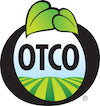World Water Day 2015: Science, Technology and the Water of the Future

World Water Day is observed on Sunday March 22; and if it sounds like just another made up United Nations event, it is. But that doesn’t take away from its critical importance. In fact, this year may be the most important WWD in history.
If you live in any part of the world where fresh water is not readily accessible, or its regularly contaminated, or even in parts of the U.S., like California, where the biggest drought in history is now underway, the urgency of better water management systems is evident.
It’s one of those hurdles we don’t like looking at let alone trying to climb, many of us lucky that there are “other people” who have the skills, determination and passion to take steps towards water conservations, purification and distribution.
But the facts are indisputable: “By 2030, rising population and growing urbanization will increase water demand by 30 percent, according to the United Nations,” reports Michael Sullivan, the Global Leader of IBM Smarter Water Management, in Forbes. But that doesn’t mean we’re heading towards irreversible disaster. “Yet, even as the challenges increase, so do the capabilities that government, cities, utilities and businesses have at their command to respond,” says Sullivan. “Big data, sophisticated analytics, sensors and the cloud provide the flexible, cost-effective backbone needed to use existing information to help address the problems. Too often, relevant data has been collected, but is stored away in different silos. Now, however, new systems are emerging that make it easier to pull them together.”
Sullivan points to several examples: scientists and engineers in the Netherlands, where a program is in the works “for confronting the interrelated problems of rising sea levels, the threat of drought, and the impact of extreme weather on its roadways, trains, and bus systems.” Data technologies have helped align water authorities with scientists and businesses while cutting costs by 15 percent.
And, according to Sullivan, most cities already understand that “they need to reinvent themselves to pull together these functions across different systems and to collaborate with new partners.”
While the nitty-gritty details may be too complex or even uninteresting to most of us, these are steps that must be taken to ensure clean water for future generations. It’s something to think about on Sunday, maybe as you slip into a hot bath, take a shower, or even dip into a pool somewhere. The world is changing. Water is changing. And even though we may not be involved in the big picture of solving our water issues, we’re all responsible, and we’re all invested.
Image: Damien Weidner
Leave a comment
Comments will be approved before showing up.


